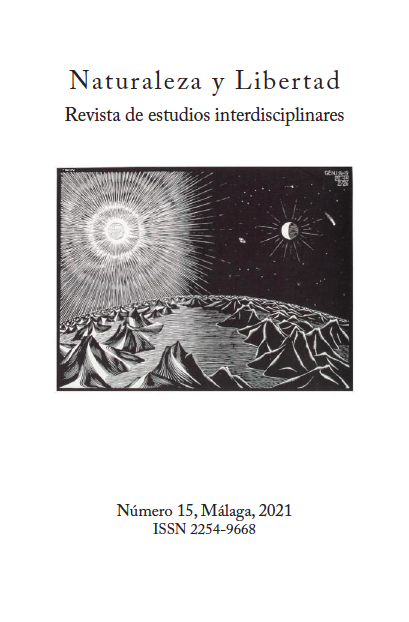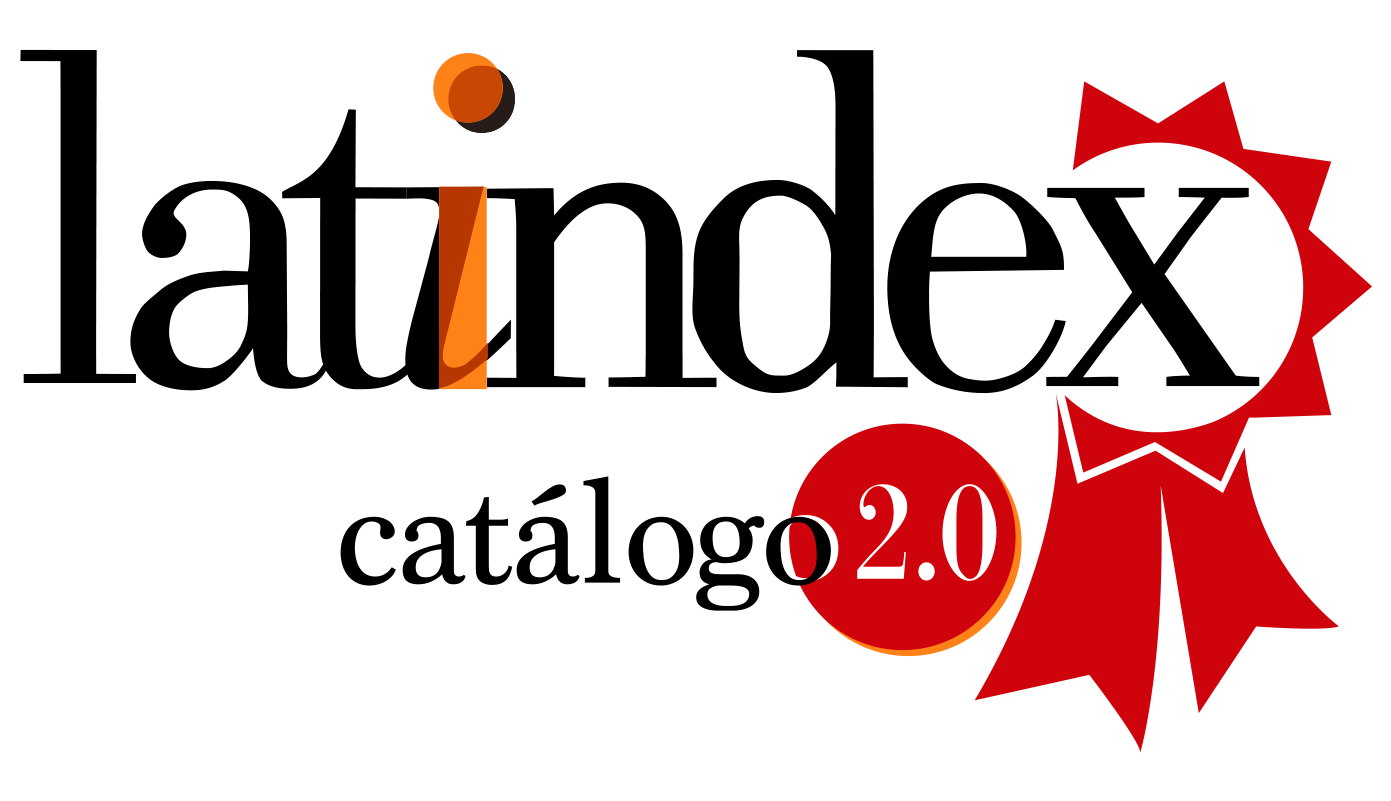El animal que ríe
DOI:
https://doi.org/10.24310/NATyLIB.2021.vi15.12341Palabras clave:
risa, risa animal, risa humana, emoción, lenguajeResumen
Este texto evalúa las semejanzas y, sobre todo, las diferencias entre «risa» animal y risa humana, reflexionando, a partir de la ciencia y la filosofía contemporáneas, sobre una vieja tésis aristotélica: que el hombre es el animal que ríe.Descargas
Métricas
Citas
Aristóteles (2010) Obra biológica. Madrid: Luarna Ediciones.
Bates, M. (2017) «These Parrots Can Make Other Parrots 'Laugh'—a First», National Geographic, March, 20/2017
Berger, P. (1998) Risa redentora. La dimensión cómica de la experiencia humana. Barcelona: Kairós
Caruso, C. (2016) «Rats Enjoy Being Tickled--When They're in the Right Mood», Scientific American, 10/11/2016
Castro, Sixto J. (2014) Sobre la belleza y la risa. Ensayo de ontología estética. Salamanca: Editorial San Esteban.
Coren, S. (2009) «Do Dogs Laugh? Animals make laugh-like sounds when they are tickled or playing», psychologytoday.com, 22-11-2009.
Darwin, Ch. (1899) The Expression of the Emotions in Man and Animals. New York: D. Appleton and Company.
Davila Ross, M., Owren, Michael J., Zimmermann, E. (2009) «Reconstructing the Evolution of Laugh-ter in Great Apes and Humans». Current Biology. Published Online: June 04, 2009.
De Waal, F. (1997) Bien natural. Los orígenes del bien y del mal en los humanos y otros animales. Bar-celona: Herder.
De Waal, F. (2009) «Darwin ríe el último», Nature nº 460 – Julio de 2009.
De Waal, F. (2016) «What I Learned From Tickling Apes», Sunday Review | OPINION The New York Times, APRIL 8, 2016 - «Lo que aprendí haciendo cosquillas a los simios», El País 12/05/2016
Joubert, L. (2002) Tratado de la risa. Madrid: Asociación española de neuropsiquiatría.
Köhler, W. (1989) Experimentos sobre la inteligencia de los chimpancés. Madrid: Debate.
Koestler, A. (1995) «Humour and wit», en Encyclopaedia Britannica, 15th Edition
Lactancio (1757) De falsa sapientia seu Divinarum Institutionum adversus gentes. Roma: Typographia Angeli Rotilii. Ver Libro III, Capítulo X, p. 71 y ss.
Lorenz, K. (2019) Cuando el hombre encontró al perro. Barcelona: Tusquets.
Mathevon, N.; Theunissen, F. et al., (2010) «What the hyena's laugh tells: Sex, age, dominance and individual signature in the giggling call of Crocuta crocuta». BMC Ecology 2010 10:9
Morelle, R. (2011) «Buscan el origen de la risa... haciendo cosquillas a animales», BBC.com, 30-12-2011.
Panksepp, J. (2005) «Beyond a Joke: From Animal Laughter to Human Joy?», Presentation on June 10, 2005, at the Annual Meeting of the Rapaport-Klein Study Group, Science, 2005, 308: 62-63 (April 1, 2005)
Plessner, H. (2007) La risa y el llanto. Investigación sobre los límites del comportamiento humano. Ma-drid, Trotta
Provine, Robert R. (2001) Laughter. A scientific investigation. New York: Penguin Books.
Rodríguez Valls, F. (2015) El sujeto emocional. La función de las emociones en la vida humana. Sevi-lla: Thémata
Rodríguez Valls, F. (2020) ¿Qué es la antropología? Sevilla: Senderos
Rooney, N. J.; Bradshaw, J. W. S.; Robinson, I. H. (2001). «Do dogs respond to play signals given by humans?» Animal Behaviour, Vol 61(4), 715- 722
Sabena, Gretel; Freiberg Hoffmann, Agustín, (2008) «Los estudios sobre la cognición en primates de Köhler: algunas repercusiones en los trabajos de Vigotsky», XV Jornadas de Investigación y Cuarto Encuentro de Investigadores en Psicología del Mercosur. Facultad de Psicología Universidad de Bue-nos Aires, Buenos Aires.
Simonet, P., Versteeg, D., Storie, D. (2005) «Dog-laughter: Recorded playback reduces stress related behavior in shelter dogs», Proceedings of the 7th International Conference on Environmental Enrich-ment July 31 – August 5, 2005.
Siurana, J. C. (2015) Ética del humor. Fundamentos y aplicaciones. Madrid: Plaza y Valdés
Schwing, R., Nelson, X. J., Wein, A., & Parsons, S. (2017). «Positive emotional contagion in a New Zealand parrot». Current Biology, 27(6), R213–R214.
Descargas
Publicado
Cómo citar
Número
Sección
Licencia
Aquellos autores/as que tengan publicaciones con esta revista, aceptan los términos siguientes:
1. La información de derechos de autor y licencias se describe claramente en el sitio web de la revista: todo el contenido publicado en Naturaleza y Libertad es de acceso abierto sin límite y está sujeto a la licencia Attribution-NonCommercial-ShareAlike 4.0 International (CC BY-NC-SA 4.0). El texto completo se puede consultar en https://creativecommons.org/licenses/by-nc-sa/4.0/
2. Es responsabilidad de los autores obtener los permisos necesarios para las imágenes que están sujetas a derechos de autor. Los autores cuyas contribuciones sean aceptadas para su publicación en esta revista conservarán el derecho no exclusivo de utilizar sus contribuciones con fines académicos, de investigación y educativos, incluido el autoarchivo o el depósito en repositorios de acceso abierto de cualquier tipo. La edición electrónica de esta revista está editada por la Editorial de la Universidad de Málaga (Uma Editorial), siendo necesario citar el origen en cualquier reproducción parcial o total.
3. Esta revista permite e incentiva a los autores a publicar artículos en sus sitios web personales o en repositorios institucionales, tanto antes como después de su publicación en esta revista, siempre que proporcionen información bibliográfica que acredite, en su caso, su publicación en la misma.
4. En ningún caso se publicarán artículos anónimos.





18.png)













